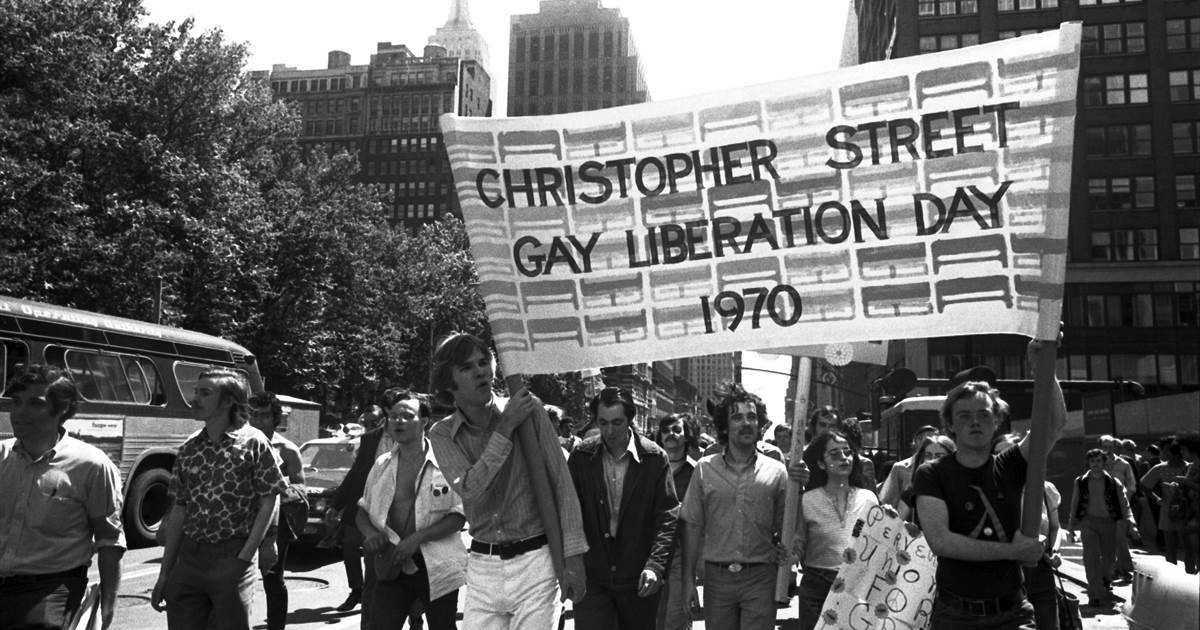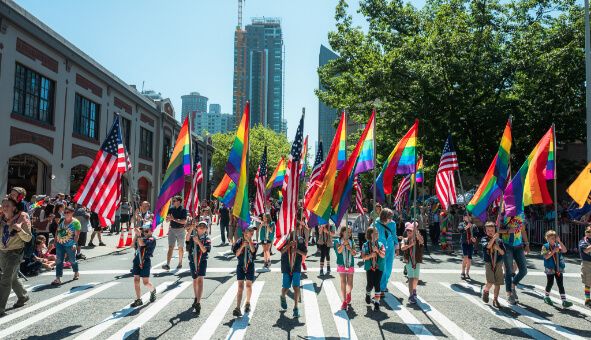Celebrating LGBTQ History Month
October is the month for recognizing the history of the LGBTQ community and celebrating its members' contributions to society.

In 1994, a Missouri high school teacher believed that there should be a month dedicated to teaching and celebrating gay and lesbian history.
October is the month for recognizing the history of the LGBTQ community and celebrating its members' contributions to society.
Stonewall
Modern LGBTQ acitivism is derived from the Stonewall riots. In the wee hours of the morning on June 28, 1969, police raided the Stonewall Inn, a gay bar in Greenwich Village, New York. A crowd, mainly consisting of other homosexuals, gathered to watch, and soon violence broke out.
The Tactical Patrol Force eventually showed up, but they couldn’t control the situation. Gay rights pioneer Bob Kohler later said “The cops were totally humiliated … no group had ever forced the cops to retreat before,” and that they were furious because they didn’t expect the homosexuals to riot.
The riot became widely publicized, resulting in several more riots in the days immediately afterwards. Dave Carter, Stonewall Historian, wrote that Stonewall was different from other LGBTQ uprisings because thousands of people were involved, it lasted a long time, and it was the first to get major media coverage.
Every major US city, as well as some in Canada, Australia, and Western Europe soon had its own gay rights groups. Historian Lillian Faderman claims that the riots “sounded the rally for [the] movement,” and that resorting to violence like other oppressed groups implied that homosexuals have as much reasoning behind their actions as the other groups.
Pride
Minnesotan gay rights acitivst Thorn Higgins coined the term “Gay Pride,” and bisexual activist Robert A. Martin and gay activist L. Craig Schoonmaker popularized the adjective ‘pride’ to describe the festivities in June that celebrate the LGBTQ community.
In the 80s and 90s, under pressure from more conservative members of the community, many gay rights activist movements stopped being so radical. Terms like ‘liberation’ and ‘freedom’ were dropped from titles of organizations or marches. Other symbols of gay pride such as the pink triangle and lambda were also dropped in favor of the pride flag.
Bill Clinton was the first president to declare June as “Gay and Lesbian Pride Month” in 1999 and 2000, and Barack Obama also declared June as “LGBT Pride Month” for the duration of his time in office.

Pride Parades
Brenda Howard, a bisexual activist, is often credited as the “Mother of Pride” for her coordination of one of the first gay pride parades, and her idea for a week of events surrounding the anniversary of Stonewall.
The first pride march took place the day before the one year anniversary of Stonewall in Chicago. The day after, New York’s first pride parade took place, covering 51 blocks. In the two years after that, many more cities started annual pride marches, including some in Europe and in Milwaukee.
Coming Out
The term “coming out” is derived from a Coming Out party for a young aristocratic woman who is making her debut, or formal presentation to society. Pre-WWII homosexuals used the term ‘coming out’ not to signify coming out of the closet, but a coming out into the homosexual community.
Karl Heinrich Ulrichs, a German gay rights activist, was the first to write publicly about the idea of ‘coming out.’ In 1869, he wrote that the idea of self-disclosure was a means of emancipation, and that people who felt same-sex attraction shouldn’t be discriminated against.
Robert Beachy, a history professor at Yonsei University in South Korea said, “I think it is reasonable to describe [Ulrichs] as the first gay person to publicly out himself.”
Coming Out Day
Rodney Wilson, a high school teacher from Missouri, along with some of his colleagues, organized the recognition of October as LGBTQ history month in the early 90s. October was selected because schools are in session and existing traditions, such as Coming Out Day, occur in that month.
National Coming Out Day is observed on October 11th and was first celebrated in 1988. The event was inaugurated by Jean O’Leary, a lesbian activist and political leader, and Robert Eichburg, a gay activist and psycologist.
The date was chosen to commemorate the Second National March on Washington for Lesbian and Gay rights, which happened the year before. The march was organized to raise awareness of the AIDS epidemic, the lack of acknowledgment from Reagan Administration on the AIDS epidemic, and the Supreme Court case Bowers v. Hardwick–which upheld the criminalization of sodomy between consenting adult men in the private home.
The march also marked the first national coverage of ACT UP (AIDS Coalition To Unleash Power), a political group working to end the AIDS pandemic and aiming to improve the lives of those with AIDS through direct action, medical research, treatment and advocacy.
The march also increased visibility for bisexuals. About 75 self-identified bisexuals marched that day, and later led to the founding of the North American Bisexual Network.
Why You Should Care
Despite the increased acceptance of the LGBTQ community, homophobia is still a serious global problem. LGBTQ identifiying people have been discriminated against and criminalized for just as long as they have existed.
People have been gay and trans since at least the time of the ancient Greeks and Sumerians, and it’s not like they're going to stop any time soon. But the pure malice against these people needs to end.
There have been, and still are, death pentalties for being gay. If you weren’t put to death for being a sodomite, you were thrown in jail. Notable homosexual Alan Turing, who broke Nazi code to help end WWII and basically invented computers was arrested and “treated” for homosexuality, alledgedly driving him to suicide.
The Trevor Project, an organization providing suicide prevention services to LGBTQ youth conducts mental health surveys each year. In their latest survey, they found that LGB youth seriously contemplate suicide almost three times as much as heterosexual youth. In a study conducted by the American Academy of Pediatrics found that more than half of transgender males who took the survey had attempted suicide, with around 30% of transgender females and 41% of non-binary youth having attempted suicide as well.
A notable case is that of Leelah Alcorn. In 2014, after her parents denied her hormone replacement therapy, she killed herself. She wrote on her Tumblr that she hoped her death would start a dialogue about discrimination, abuse and lack of support for transgender people.
The celebration and recognition of LGBTQ history can make a difference. Representation matters, especially to kids. If a character shows up on TV or in a movie that’s just like them, and that character is confident with themself, is cool and beats up bad guys, then maybe the kid can do that too.
And with the discussion of these awesome people who happened to be a part of the LGBTQ community, the topic will become normalized and people won’t be scared to be themselves.
~
If you feel like you’re in a rough spot, you can call the National Suicide Prevention Hotline at 1-800-273-8255, or contact a counselor at the Trevor Project through text, chat or phone at https://www.thetrevorproject.org/get-help-now/
For more information about gay, lesbian and transgender icons, vist https://lgbthistorymonth.com/
If you are interested in celebrating LGBTQ+ history and spreading awareness of LGBTQ issues, you can contact Ms. Meyer for more information about our school’s Gay-Straight Alliance (GSA).
